People are afraid of bugs that have a lot of legs. The more legs, the scarier they appear. The bugs with the most legs are not scary. In fact, they are harmless creatures. Centipedes are one of the bugs with the most legs, which can be rather daunting when you encounter them.
Wondering if you saw a centipede or some other bug? Continue reading to find out more.
Table of Contents
What Are Centipedes?
A centipede is not actually an insect, they are myriads, which are distant cousins to the insect. They have elongated bodies with lots of legs, which separates them from other insects. Centipedes hunt other insects, which they paralyze using a venomous sting.
Centipedes are long and flat arthropods, with each segment having legs, except the last segment. They hide under bark, leaf litter, and tones, hunting at night. They are able to move fast with their numerous pairs of legs.
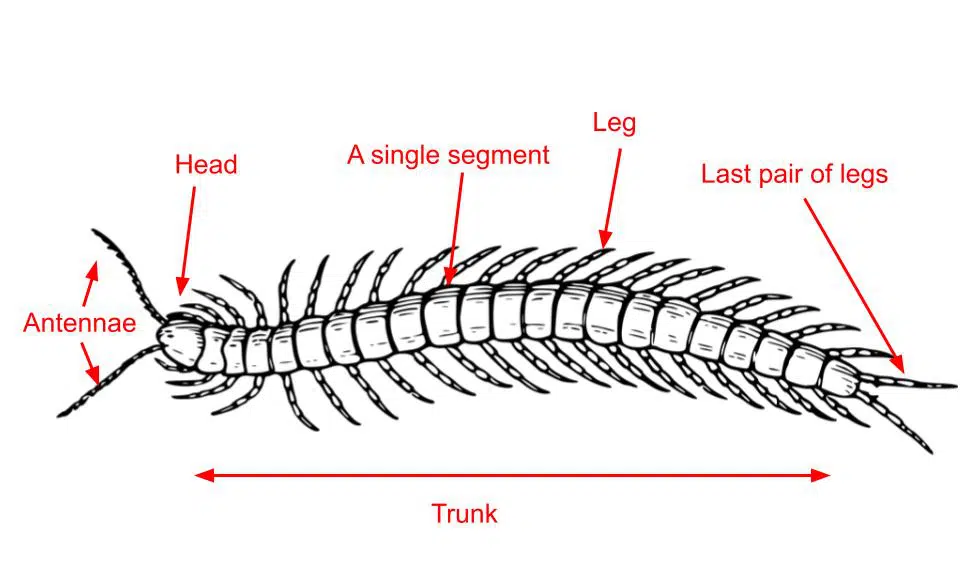
Centipedes can range from having thirty legs to having more than three hundred legs once they are adults. There are approximately 3,100 species of centipedes around the world. They can be found where there is ample food, shelter, and moisture. They need high humidity in order to survive.
The centipede’s diet consists of spiders, mites, and other arthropods. They hunt at night and are fast. They move quickly when they attack, poisoning their prey before consumption.
Types of Centipedes
House Centipedes

House centipedes are a yellow/gray color with fifteen pairs of legs. It originates from the Mediterranean and has spread to other parts of the globe. It is found in human homes, killing and eating insects and arachnids.
Adults grow to around 35mm in body length with fifteen pairs of legs and a rigid body. They have long antennae of around 100mm in length. Their yellow to gray body has dark stripes down the length.
These centipedes feed on bed bugs, termites, spiders, cockroaches, ants, and silverfish, to name a few. They are nocturnal hunters with developed eyes, though they rely on their antennae when hunting, which is sensitive to smell and touch.
Stone Centipedes
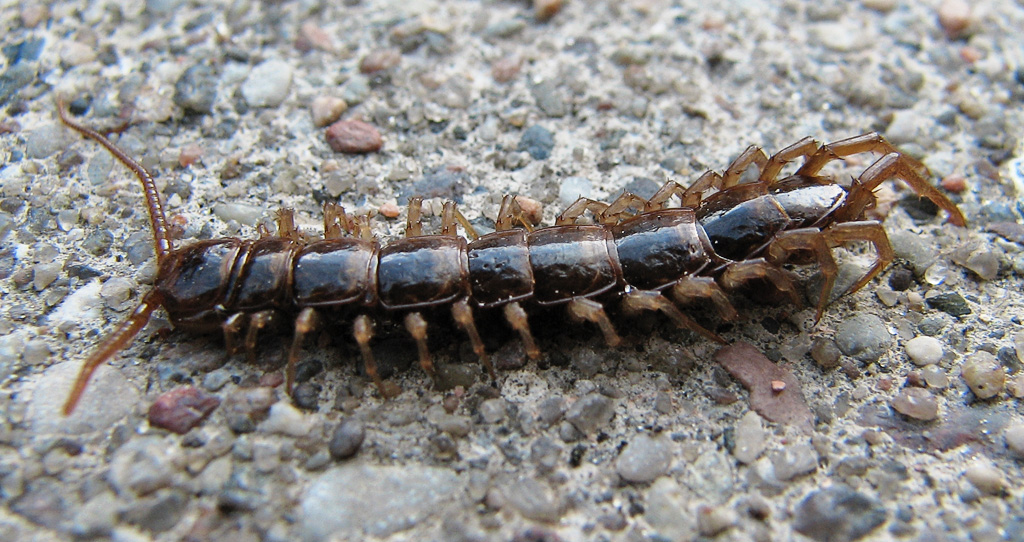
Stone centipedes are also known as brown centipedes and are common in Europe, though they have been distributed globally. They grow to around 30mm in body length and are chestnut brown.
They are mostly encountered in the upper layers of soil, under rocks, and rotting logs. When disturbed, they run quickly for cover. Their diet comprises invertebrates and insects, including worms, slugs, and flies.
Craterostigmomorpha
This centipede has flattened or rounded heat with antennae. They do not have the best vision, relying on their antennae for touch and smell. Their front legs have adapted to become pincher-like appendages, found just behind the head, used to capture prey and inject them with venom.
The body comprises fifteen segments or more, each segment has a pair of legs. These centipedes can grow to more than 30cm in body length, eating lizards, frogs, insects, and more.
Tropical Centipedes

Tropical centipedes belong to the Scolopendromorpha order and include some of the most fierce and largest predatory centipedes. They are important in toxicology and medical research, focusing mostly on human bite studies.
These are strong and flexible centipedes, that can grow to 30cm in body length with up to twenty-seven segments and around twenty-three pairs of legs. They have a large head, which is rounded and has poor vision, relying on their long antennae to sense vibrations.
These centipedes can range in color from orange or red to blue, yellow, or green. There are more than six hundred species of tropical centipedes in the world.
Soil Centipedes

Soil centipedes spend their time digging and burrowing in soil. They do this by expanding and contracting their bodies, similar to earthworms. These centipedes are not often encountered, hiding in soil and under leaf litter, where they can grow to 280mm.
Bugs That Look Like Centipedes
There are a number of bugs you may encounter that you mistake as a centipede, these include:
1. Millipedes

Millipedes are groups of arthropods with two pairs of jointed legs on the majority of their body segments. They are elongated in either cylindrical or flattened body shapes, made up of twenty segments or more. There are approximately twelve thousand named species of millipede in the world.
Unlike the centipede, the millipede is slow-moving and feeds decaying leaves and dead plants. They are common in gardens and homes and are completely harmless to humans. Millipedes can grow to 38cm in body length.
2. Earwigs

There are approximately two thousand earwig species in the world. They have forceps like pincers on their abdomen with rarely used fore wings. They are found throughout the world, except in Antarctica.
They are nocturnal, hiding in moist crevices during the day and being active at night. They feed on plants and insects. They can be pests causing damage to crops and flowers. Females are excellent mothers, caring for their eggs, watching over their offspring until their second molt. It takes five molts to reach adult size.
3. Silverfish
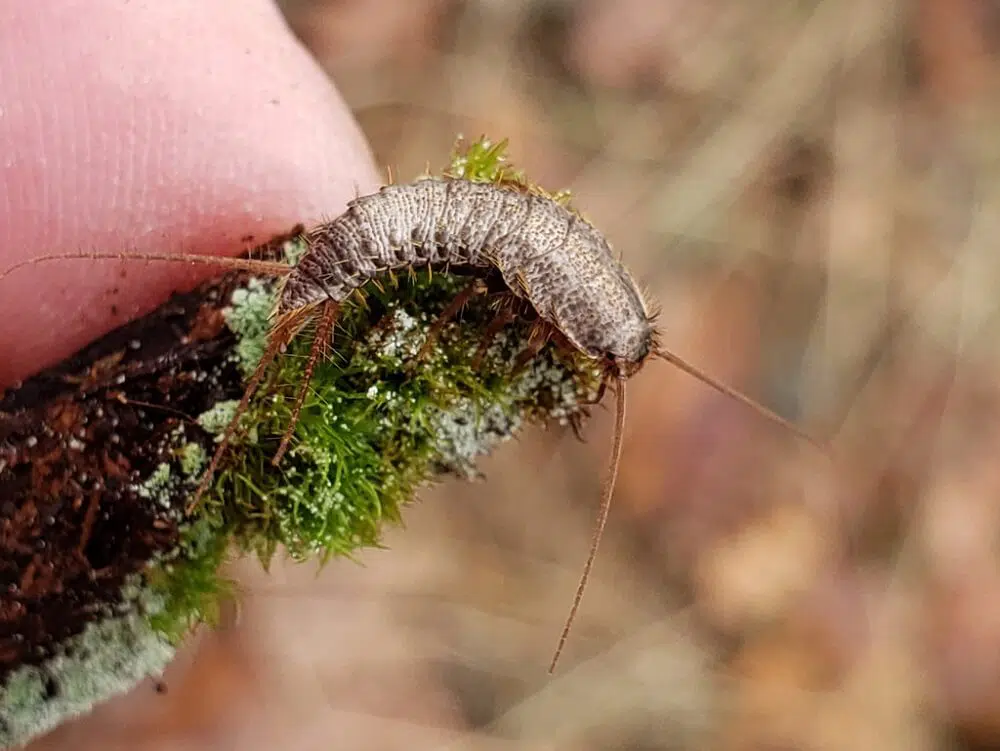
Silverfish are small and wingless insects, belonging to the Zygentoma order. They are light gray to silver color with a fish-like appearance when moving. They can grow to 25mm in length with an abdomen that tapers at the back, which gives the Silverfish its fish appearance.
They have long antennae and move with a wiggle motion. They are able to regenerate their antennae and terminal filaments within four weeks if lost. They avoid light and are fast to escape.
4. Firebrats

Firebrats can grow to 1.5cm and are small hexapods. They prefer high temperatures with humidity, often found near boilers or furnaces. They feed on starches and carbohydrates, including dog foods, book bindings, and flour.
They are common outdoors, where you may find them hidden under a rock or some leaf litter. While they are harmless, they are considered pests when they get indoors. They can cause damage to paper goods, stain clothing, and contaminate food.
5. Pseudocentipedes
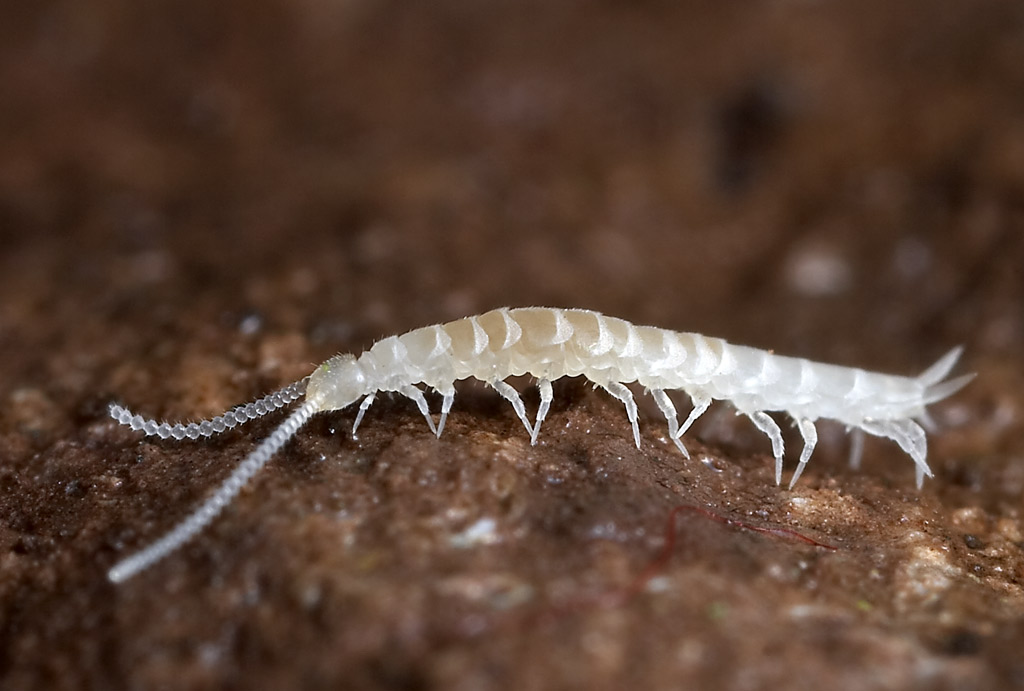
This is often referred to as a garden centipede, but it is a soil-dwelling arthropod, resembling a centipede. They are small and non-venomous, fast-moving, and can be found up to fifty centimeters under the ground.
They have no pigmentation and can grow to 10mm in length with two divided body sections. They have long segmented antennae, which they use to sense vibrations. The abdomen comprises up to twenty-four segments.
They live deep in the soil, under decaying wood or stones, and always in moist areas. Some are considered crop pests, especially pineapples and sugar cane.
6. Pauropods

Pauropods are small millipede-like arthropods, comprising around eight hundred and thirty species. They live in leaf mold and in the soil. They look similar to centipedes. Due to their living hidden under the soil or leaf litter, they are seldom observed.
7. Woodlice
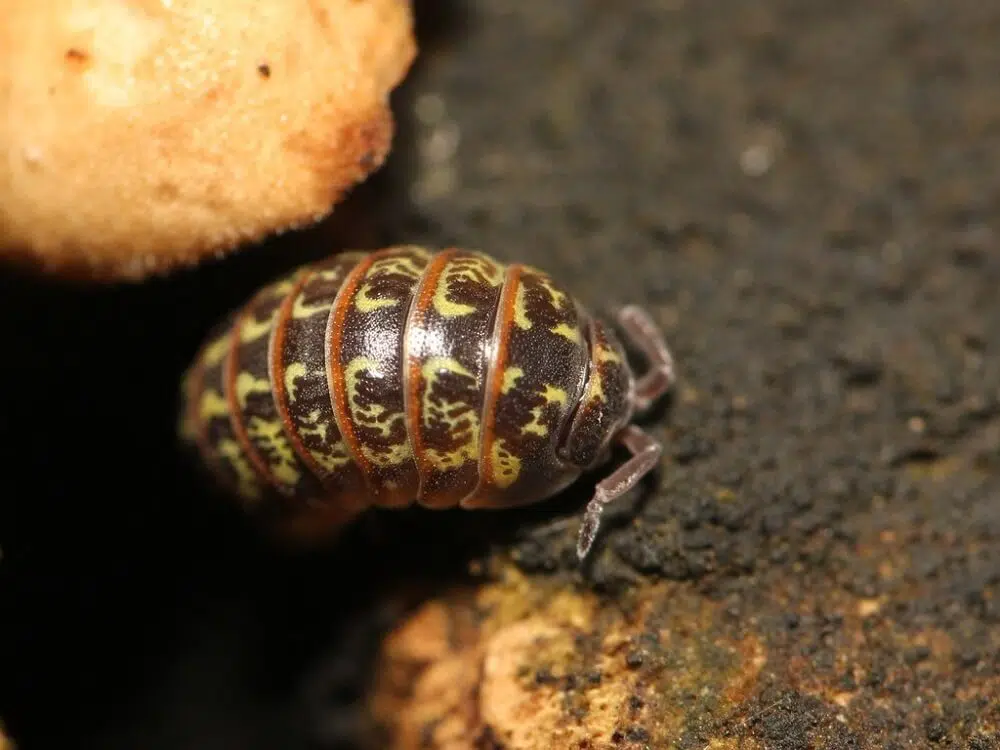
Woodlice is a crustacean, usually found in old wood. They were the first marine isopods and go under a number of different names. They have flattened bodies, which are segmented, and seven pairs of jointed legs.
There are more than three thousand nine hundred species of woodlice in the world. They have adapted to terrestrial life and can be found from deserts to marine zones. They are a widely studied species for their nutrient recycling and behavior.
They are also popular terrarium pets with varied colors and conglobating abilities. They have a hard exoskeleton, which they shed as they grow.
Females keep the fertilized eggs under their abdomen, which has overlapping plates with five pairs of legs. They are believed to have a very unpleasant taste.
8. Pill Bugs

Pill bugs are sometimes referred to as roly polies and are often confused with centipedes. They need a high moisture content to survive, often found hiding under debris and seldom out in the open. Pill and Sow bugs are both completely harmless to humans, eating dead plant material.
9. Caterpillars
With a colorful elongated body, caterpillars often look highly similar to centipedes.
Slowly crawling using their many prolegs, caterpillars are actually types of insects that have considerably fewer legs compared to centipedes.
If centipedes can have more than 100 legs, caterpillars only have 6 legs, just like most types of insects.
Caterpillars also come in different colors and may be completely hairless or they can have short hairs, just like some centipedes have on their sensitive antennae.
Most caterpillars feed on flowers and leaves, often living their entire caterpillar life stage on these types of common plants known as host plants.
Caterpillars, on the other hand, can be considerably larger than some centipedes across the species.
Absolute numbers can be similar, on the other hand. Both the largest caterpillars and the largest centipedes can measure anywhere between 2 and 6 inches.
The diet of caterpillars is also considerably different from the diet of centipedes.
Thousands of caterpillars mostly feed on plants and plant material.
Centipedes, on the other hand, are mostly carnivorous, going for large and small insects and arachnids they can quickly snatch.
Interestingly, there are species of caterpillars and centipedes that can lead to allergic skin reactions in humans, which may lead to some confusion.
Both caterpillars and centipedes can have venomous glands but the number of legs of the species that’s bitten should indicate its correct identity.
Caterpillars only have a few legs while centipedes have at least 15 legs, often even considerably more.
10. Ladybug Larvae

Ladybugs are round, colorful, and often dome-shaped. They are some of the smallest bugs out there but their larvae are larger, with a completely different appearance.
As with most larvae, ladybug larvae go through different life stages. Their last stage is when they resemble centipedes the most.
This is a time when the larvae have an elongated shape with a size of several inches (at most) and a tapered rear end.
Mostly black, these types of larvae come in different colors.
A black base nuance with orange spots is highly characteristic of these larvae.
Pink, salmon, red, and yellow nuances are often spotted on their backs.
The black base color of most larvae can also be different, depending on
the species and even the life stage of the larvae.
Yellow and orange ground colors are specific to species such as The Two Stabbed Lady Bettle (Chilocorus stigma).
11. Fishfly Larvae
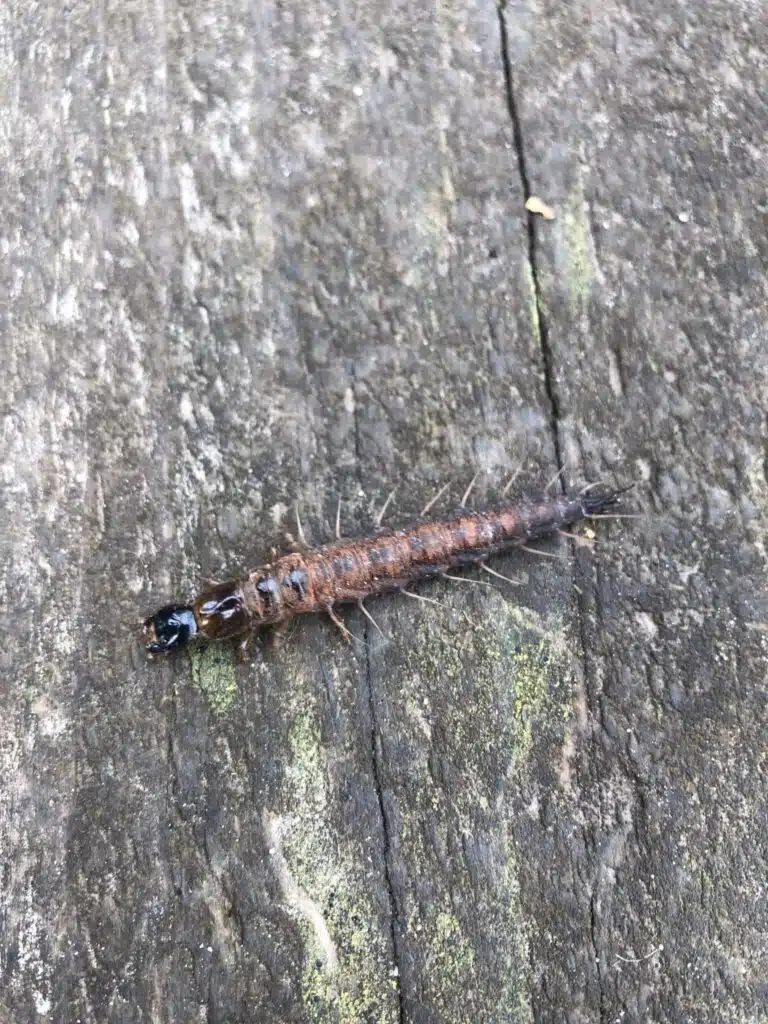
The elongated body shape, the dark appearance, and even the number of legs make fishfly larvae similar to centipedes.
Most centipedes have many legs. Fishfly larvae have at least 6 pairs of legs plus other false legs down the body which would make them highly similar to centipedes.
Unlike centipedes, fishfly larvae only look this way for a brief period.
Initially small eggs, they become larvae before emerging as winged insects of a dark appearance.
12. Ground Beetle Larvae

Named after their tendency to live in the ground in their initial stages, Ground Beetle larvae are white, dark brown, or even black.
A species with an elongated body shape and many pairs of legs, Ground Beetle Larvae are among the bugs found in gardens, on plants, stems, and leaves.
Eventually, these types of larvae eventually drop to the ground and pupate in the ground. They also become brighter, almost white, once they’re ready for pupation.
Even more, these types of larvae eventually become bugs, while centipedes maintain their profile throughout their life stages.
Differentiating dark Ground Beetle Larvae from centipedes is the most difficult, due to both being almost black at times.
Still, you can look at the number of legs to correctly identify the species as Ground Beetle Larvae mostly have fewer legs in the front while centipedes have widespread legs under the body.
13. Common Eastern Firefly Larvae
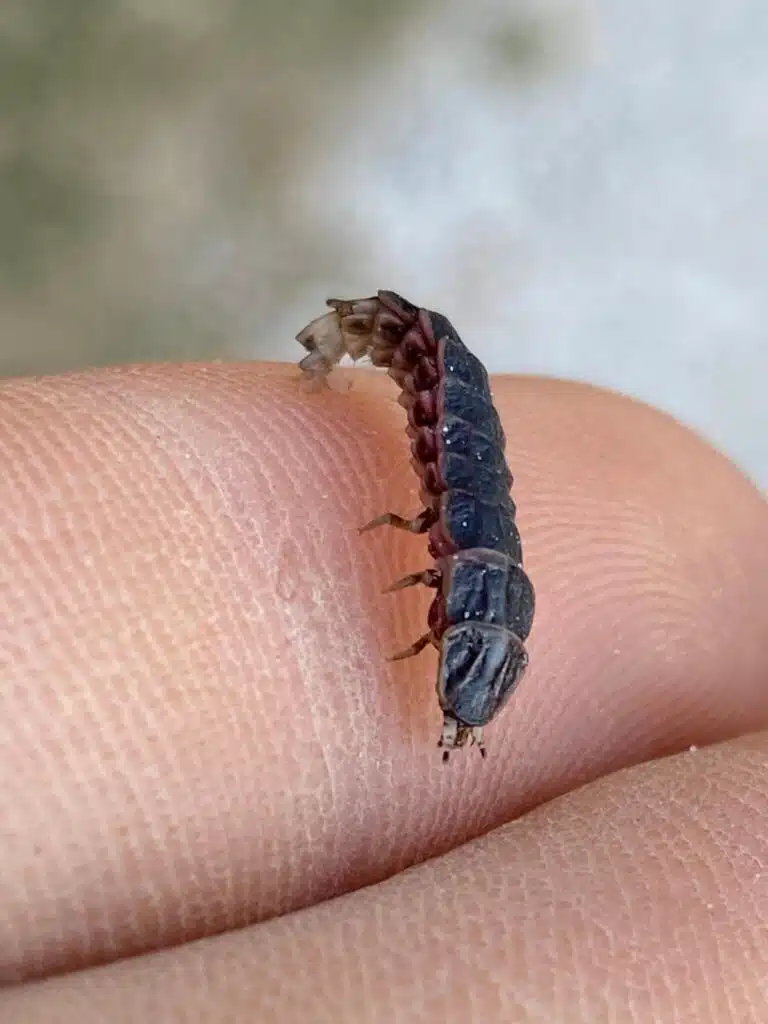
Fireflies are some of the most attractive species of insects due to their capacity to glow at night.
All fireflies are insects and go through different life stages, including a larvae stage when they grow to an elongated shape and a dark appearance.
A dark brown color is often specific to The Common Eastern Firefly Larvae (Photinus pyralis).
This color and the elongated body shape of up to 0.3 inches make these types of larvae similar to some of the smaller centipedes of the world.
As with most insects, The Common Eastern Firefly Larvae have 6 legs, in groups of 2.
This is a species that has its legs grouped in the front. This means the legs are visible closer to the head while the legs of centipedes run from head to tail.
14. American Carrion Beetle Larvae

American Carrion Beetle Larvae (Necrophila americana) are among the first insect larvae making their appearance on carrion.
This is often a species that can spread diseases but its larvae can be wrongly categorized as centipedes, which mostly eat plant material.
Larvae of the species have a dark brown appearance when fully, grown, just before pupating.
They drop to the ground and pupate into the ground.
Resilience is also specific to The American Carrion Beetle Larvae. This is a species that pupate and overwinters and is an adult, often surviving at least for a couple of seasons.
As an insect, this larvae also has 6 legs or 3 pairs of legs, which is one of the most visible physical differences between the American Carrion Beetle Larvae and centipedes.
15. Blue Fungus Beetle Larvae

A species that looks like a small type of blue-black centipede, The Blue Fungus Beetle Larvae (Cypherotylus californicus) is considerably different.
This is a species of larvae that’s often shorter, never actually reaching a size of 1 inch.
It also shows multiple striations along the dorsum as well as a tapering and pointy rear end.
The larvae of Blue Fungus Beetle also grow exclusively next to rotting logs, while centipedes can appear in almost any area with high moisture such as under a pile of dead leaves.
Similarly to the American Carrion Beetle Larvae, Blue Fungus Beetle Larvae are also known for pupating in the ground.
Similarities continue with the capacity of the adults to overwinter with reduced to no activity.
Centipedes also survive winters, but without changing their appearance. They can live longer, surviving a long period of almost 6 years.
16. Larger Elm Leaf Beetle Larvae

Small, stocky, and often bright brown, Larger Elm Leaf Beetle Larvae (Monocesta coryli) is primarily larvae of elm trees.
However, the host of this species can vary considerably. For example, the host can be another type of hardwood tree such as hazelnut.
The size, number of legs, and body shape make it look slightly different from a typical centipede.
This is a species that grows a few times smaller than centipedes and which is also bulkier with prolegs instead of actual legs.
Centipedes often make their way indoors. They are rarely seen as a pest or a type of serious threat to the home.
Larger Elm Leaf Beetle Larvae aren’t a pest, but they may stain the home if it makes their way indoors with potted plants.
These larvae leave a yellow-orange residue when under stress.
17. Elm Leaf Beetle Larvae

The pest status is one of the main differences between Elm Leaf Beetle Larvae (Xanthogaleruca luteola) and actual centipedes.
While they can appear similar, Elm Leaf Beetle Larvae are considerably more dangerous than centipedes.
These larvae are known for their impact on elm trees and other trees, where they first make their appearance as small yellow dots (actually eggs) on leaves.
As they grow, they become yellow and black or brown and black with an elongated shape, somewhat similar to centipedes.
Unlike most centipedes, these larvae feed on live leaves, essentially leading to serious health issues for trees.
They can lead to stunt growth or even defoliate trees, in rare cases.
Apart from spotting these larvae on tree leaves which signals they aren’t centipedes, you may also find them on the ground, under the tree canopy.
This is a late stage Elm Leaf Beetle Larvae going into pupation and often becoming dominantly yellow.
18. Brown Rove Beetle Larvae
Like some centipedes, Rove Beetles can eat dead plant material. The bugs may also feed on live or dead insects.
The bugs have a dark appearance but their larvae have a bright appearance as they almost look completely white.

Brown Rove Beetle Larvae (Platydracus maculosus) are further known for their capacity to overwinter as larvae.
What looks like a dead centipede in a pile of leaves in the winter may actually be an overwintering Rove Beetle in its larvae stage as the species doesn’t overwinter as an adult.
Removing these types of larvae from plants may not have any true benefit.
In fact, once adults, Rove Beetles may help control invasive populations and their eggs.
19. Mealybug Destroyer Larvae

Mealybug Destroyer Larvae (Cryptolaemus montrouzieri) are small, covered in a white waxy substance that’s also fuzzy.
This fuzz may actually be wrongly perceived as tiny legs which can resemble the legs of centipedes.
Mealybug Destroyer Larvae are further known to make their living on plants, similar to some centipedes that live in gardens.
However, these types of larvae are considerably small, and often fall prey to other predatory species, as a result.
Even adult Mealybugs can eat their young, as well as plants they damage and which they have known pests of.
There’s a wide variety of Mealybug Destroyer Larvae. The United States alone has several hundred subspecies, but centipedes also come in different species, of lesser numbers, on the other hand.
You can identify Mealybug Destroyer larvae by their small size. They are almost microscopic, unlike centipedes.
20. Larder Beetle Larvae
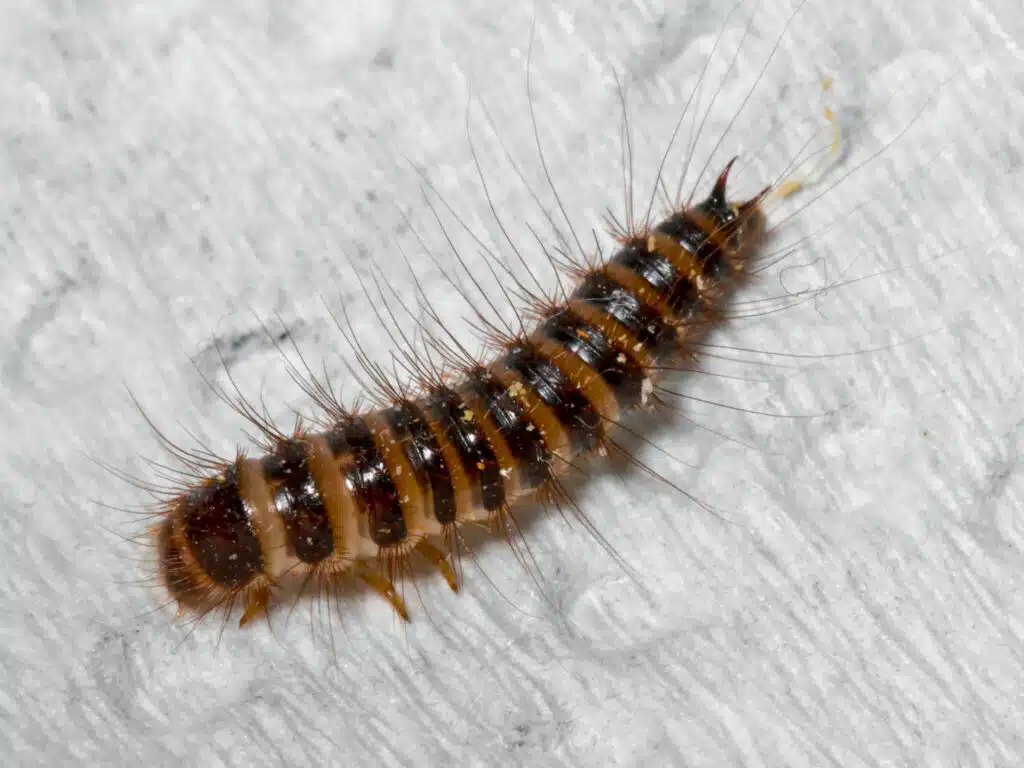
Larder Beetle Larvae (Dermestes lardarius) used to be one of the most common problems when it comes to damaging species of stored meats.
In the old days, there weren’t any refrigerators or smoking techniques used to store meat. This exposed stored meats to bugs and larvae such as The Larder Beetle Larvae.
Those who still store meats without proper preservation techniques may still find them today.
The larvae of the species show a combination of black and brown colors, which resemble the color patterns of some dark centipedes.
Unlike many centipedes, however, Larder Beetle Larvae also have long hairs, albeit scarce.
This species is also considerably smaller than centipedes.
Even more, these types of larvae are atypical when it comes to pupation behavior. Larder Beetle Larvae can bore into soft wood to pupate, unlike centipedes.
Some of the typical methods of keeping these larvae out of the house involve properly sealing access routes for bugs into the house.
Rats and mice are also among the vectors that can facilitate their way indoors, especially towards storing foods Larder Beetle Larvae like so much.
21. Cottonwood Leaf Beetle Larvae
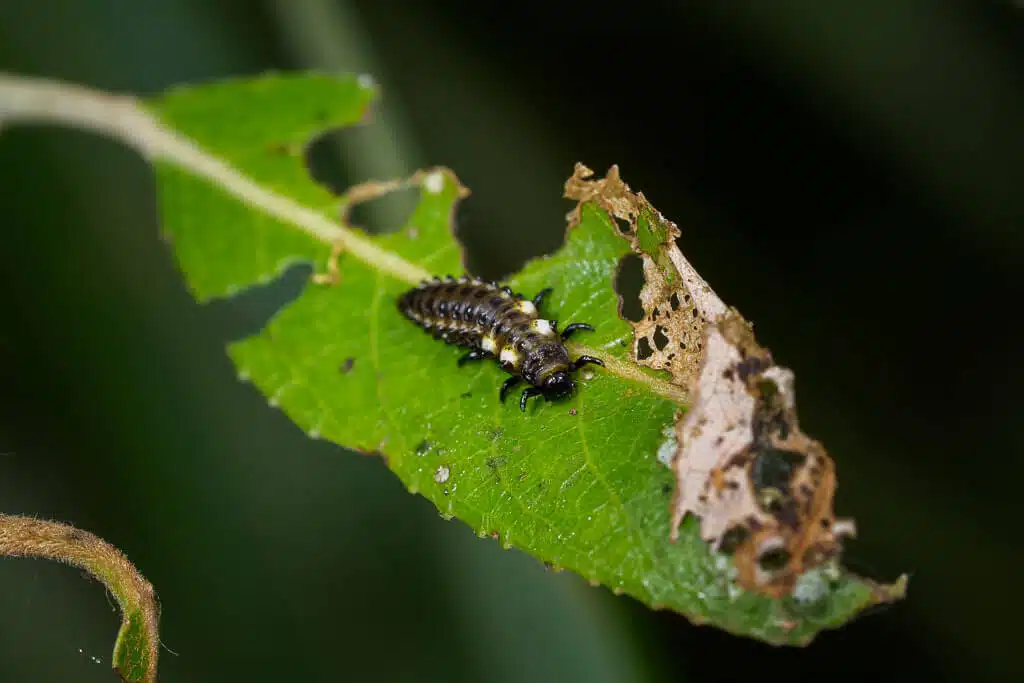
Cottonwoods are among the most impacted types of host leaves by The Cottonwood Leaf Beetle Larvae (Chrysomela scripta).
This is a larva that skeletonizes leaves and which can be spotted early as yellow eggs or clumped masses on cottonwood leaves.
Once these eggs emerge, the larvae start looking similar to centipedes.
A species that’s mostly black and elongated, Cottonwood Leaf Borer Larvae have a slight taper towards the rear abdomen.
Small orange or brown sections are further differentiated on the back of the species.
On the very first day or days of their lives, these types of larvae are bright. An off-white, pink, or bright orange color can be dominant in their early days.
This bright color is contrasted by a row of brown dots along the mid-dorsum.
It’s only in the later stages of their lives that these larvae start to darken.
Unlike real centipedes, Cottonwood Leaf Beetle Larvae only have 3 pairs of legs, located on the upper body, closer to the head.
If left unmanaged, the larvae and the adult can be highly problematic and seen as actual pests. Considerably smaller than centipedes, the eggs and larvae of the species are seen as prey for some of the most common small predators such as ladybeetles.
Summary
Before you stand on an innocent centipede moving through your home, or an insect you think is a centipede, remember that they are usually managing your pests. Centipedes and other insects are often unwelcome visitors in the home, but they kill those bugs you really don’t want in the house, such as spiders.
Being active hunters, they don’t cause damage or harm to humans. While they may appear scary with all their legs, centipedes are harmless, simply hunting for their next meal.